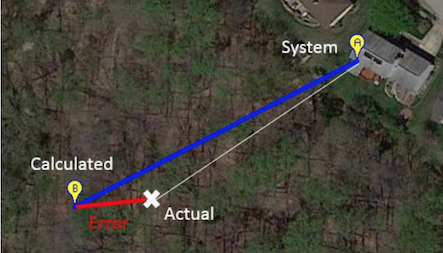Home
A comprehensive resource for safe and responsible laser use
US: Student develops experimental laser location detection device
The system is intended for use in cockpits, and is self-contained — it does not need to interface with any aircraft instruments. For location, altitude and orientation data, it has a GPS and a 3-axis magnetic compass.
A laser is detected by a camera sensor, currently with 1024 x 1024 pixel resolution. The camera detects the bright “bloom” from a direct or near-direct laser illumination (left image, below). To distinguish laser light from a bright non-laser light such as the sun, it looks at surrounding pixels to see whether they saturate the green channel of the sensor. (The system currently looks only for green laser beams since those represent over 90% of FAA-reported laser incidents. But future versions could look for other color laser beams as well.)

As the laser aims away from the camera, the bright center of the laser is still visible (right image, above). The system then looks at the center of the bright area to find the pixel location. Knowing the camera’s orientation, location and altitude, a Raspberry Pi computer running a Python program written by Hough calculates the approximate location. This is automatically sent via text message to pre-programmed recipients which could include law enforcement.
In ground testing on a slope, at a relatively short distance, the error was 15 meters. As the photo diagram shows, the system was successful in determining an approximate distance and location.

Hough notes that the system is a low-cost proof-of-concept. Suggested improvements include “more precise location sensors [that] would improve target location accuracy. Tapping into the high quality compass and GPS sensors on a commercial aircraft, for example, would drastically improve the ability of the system.” He also stated that smartphones include all the equipment needed: camera, compass, GPS, processor and display. So it should be possible to make a smartphone application to accomplish the same task.
From “Detection and Location System for Laser Interference with Aircraft”, December 2016. Thanks to Nate Hough for bringing this to our attention and allowing us to host the PDF. Note: A similar system, which does not calculate the laser source location, is the Laser Event Recorder.